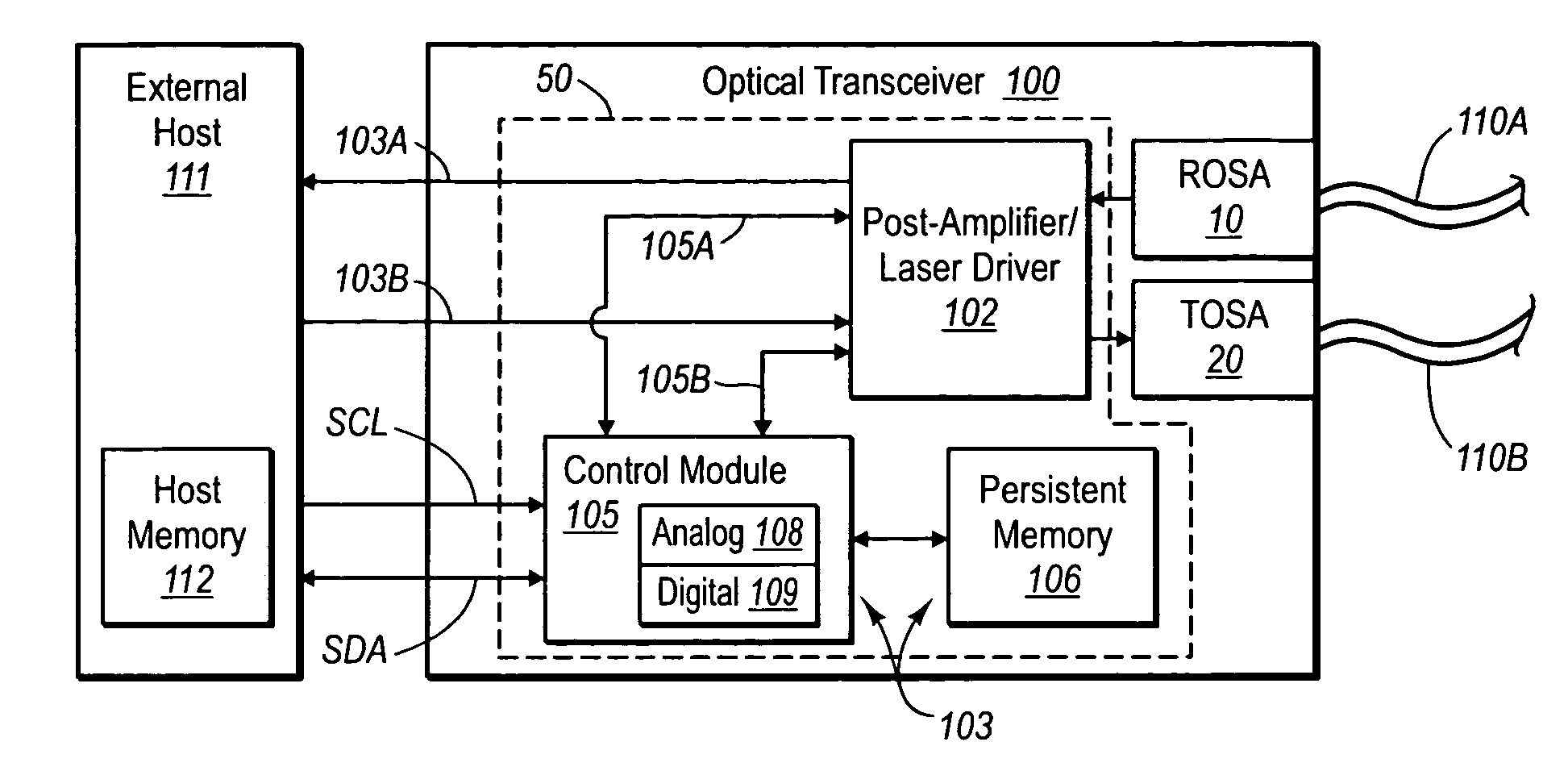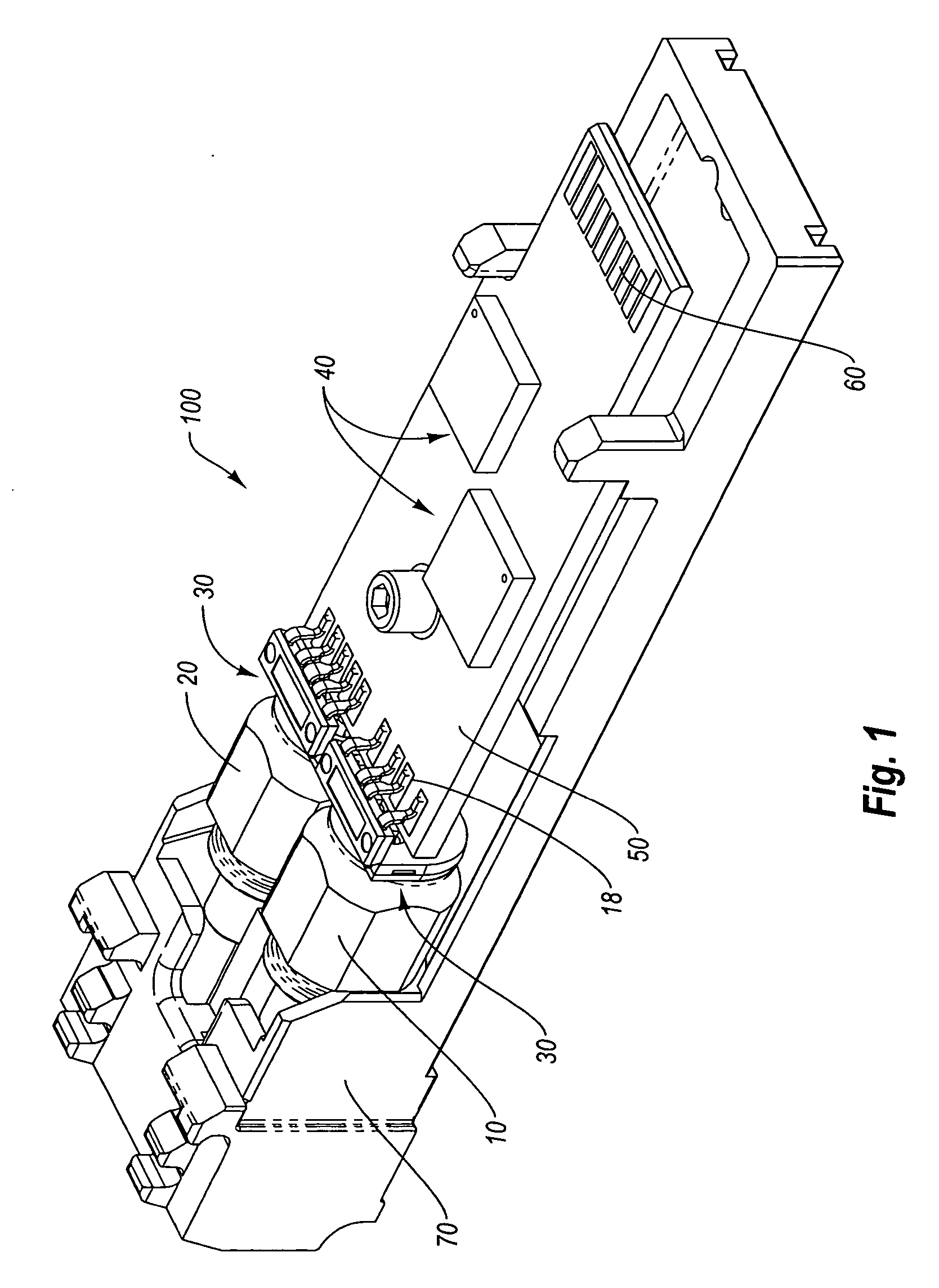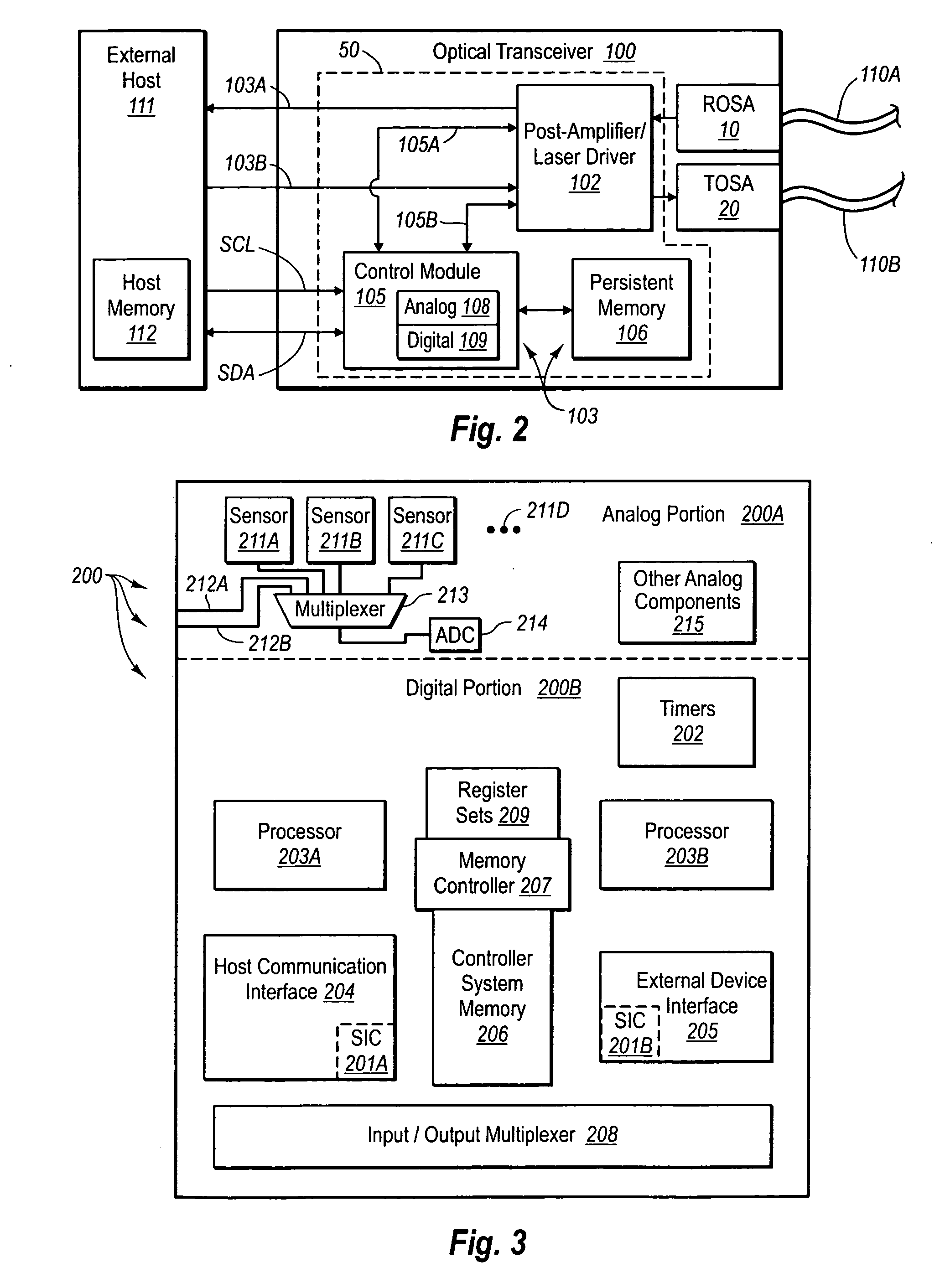Calculation of laser slope efficiency in an optical transceiver module
a technology of optical transceiver and laser, applied in the field of optical transceivers, can solve the problems of controllers, despite being partially effective, and the laser can exceed the acceptable range of such parameters, and achieve the effect of calculating the laser slope efficiency
- Summary
- Abstract
- Description
- Claims
- Application Information
AI Technical Summary
Benefits of technology
Problems solved by technology
Method used
Image
Examples
Embodiment Construction
[0022] Reference will now be made to figures wherein like structures will be provided with like reference designations. It is understood that the drawings are diagrammatic and schematic representations of exemplary embodiments of the invention, and are not limiting of the present invention nor are they necessarily drawn to scale.
[0023]FIGS. 1-6 depict various features of embodiments of the present invention, which is generally directed to controlling a light source, such as a laser, in an optical transmitter, such as an optical transceiver module, according to data relating to slope efficiency of the light source during operation. In the exemplary embodiment, the laser is included in a transmitter optical subassembly (“TOSA”) of an optical transceiver module (“transceiver”). The TOSA, together with a receiver optical subassembly (“ROSA”) of the transceiver, include various components to enable the reception and transmission of optical signals to and from a host system that is opera...
PUM
 Login to View More
Login to View More Abstract
Description
Claims
Application Information
 Login to View More
Login to View More - R&D
- Intellectual Property
- Life Sciences
- Materials
- Tech Scout
- Unparalleled Data Quality
- Higher Quality Content
- 60% Fewer Hallucinations
Browse by: Latest US Patents, China's latest patents, Technical Efficacy Thesaurus, Application Domain, Technology Topic, Popular Technical Reports.
© 2025 PatSnap. All rights reserved.Legal|Privacy policy|Modern Slavery Act Transparency Statement|Sitemap|About US| Contact US: help@patsnap.com



